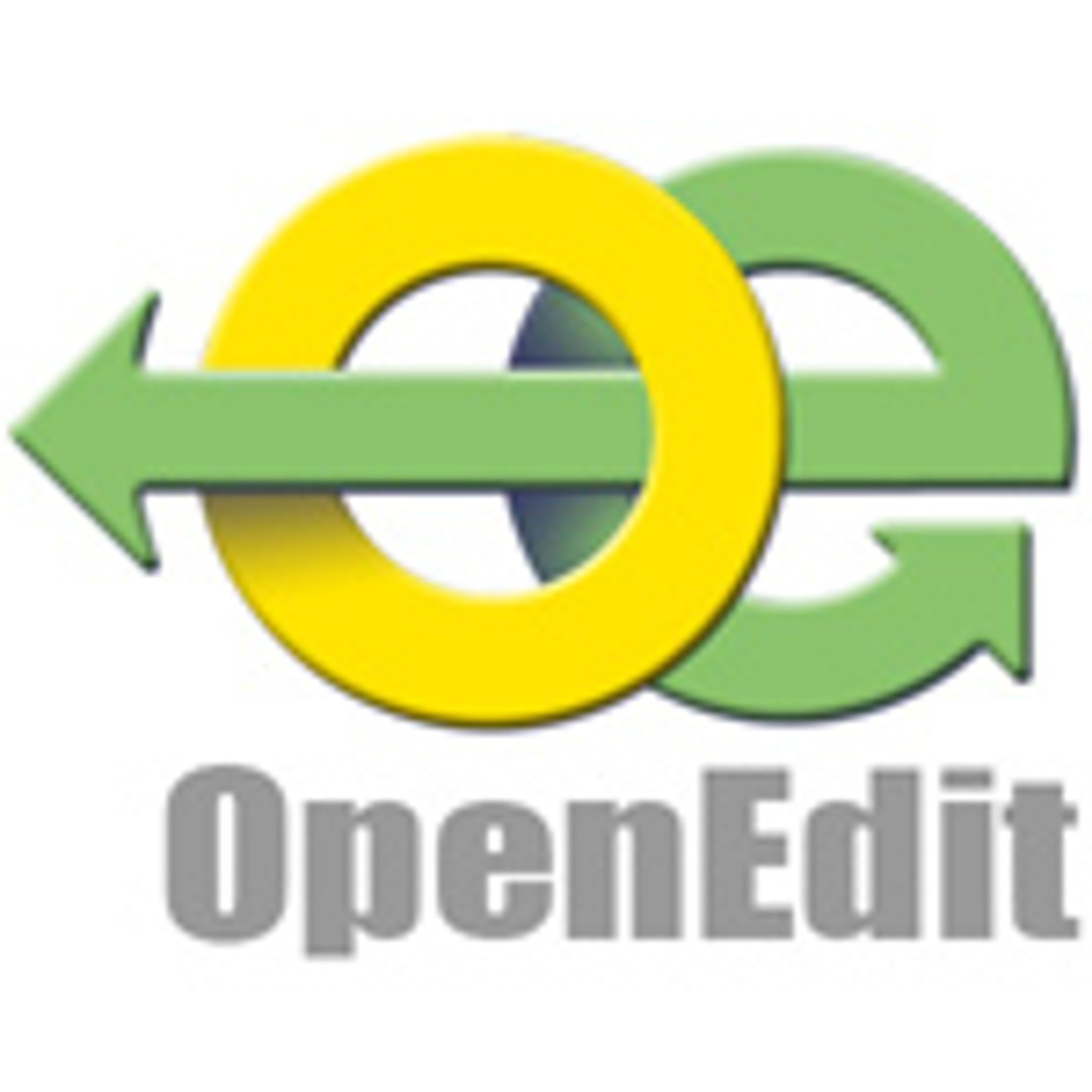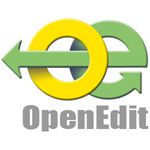Openedit Founder, Christopher Burkey Interview

 Our latest interview is with Openedit founder Christopher Burkey. Openedit is an interesting project that was founded approximately 10 years ago and utilizes java as it's base. We always find it very interesting to get a chance to talk with people who have been indepth in the industry for quite sometime as there's always an opportunity to learn something new. So sit back, grab a coffee and enjoy the read!
Our latest interview is with Openedit founder Christopher Burkey. Openedit is an interesting project that was founded approximately 10 years ago and utilizes java as it's base. We always find it very interesting to get a chance to talk with people who have been indepth in the industry for quite sometime as there's always an opportunity to learn something new. So sit back, grab a coffee and enjoy the read!
Thank you for taking the time to speak with us today.
CC: You began development of Openedit approximately 10 years ago, is that correct? What prompted you to begin this project?
CB: Yes, many people don’t realize we have been developing OpenEdit for over 10 years, using our own development team, as well as developers from the OpenEdit Community. OpenEdit began with a multi-year project for General Electric Aircraft Engines. The project required us to develop a web application, which would allow GE to capture technical data on jet engines. Each feature of OpenEdit had to be self-contained with as few interdependencies as possible. The idea was to allow any feature of OpenEdit to be able to interact with, or even within, other parts of their application. From this, OpenEdit evolved into a web application framework used to create and maintain dynamic websites and custom web applications, most notably, Digital Asset Management, Content Management and Ecommerce.
CC: Why did you choose to go open source and what other services does your company provide in order to remain profitable?

CB: Sharing knowledge and allowing developers to have the source code in hand empowers them, it drives innovation. Most of the features in OpenEdit were developed for and by organizations with specific Content Management and Digital Asset Management requirements in their work environment. OpenEdit users have seen that open source provides freedom of setting up their systems as they wish and freedom in the long term. A software company can give their software away and make money on services or add-on’s. Or perhaps a company can sell the software for a high initial price and provide support for free. When a company sells software and support, many times, it results in the customer becoming frustrated, because they don’t understand the reasoning behind paying for a software they have no control of and also paying for its support and services. OpenEdit sells installation services, project work and hosting – there is no charge to download, use and upgrade OpenEdit.
CC: What is the primary objective and/or target market of your product?
CB: Our primary market is Marketing and Creative Services departments within large firms. OpenEdit offers the best web based, open source Digital Asset Management and Content Management software used across the enterprise. Our focus is on workflow, search, management and collaboration, multi-media, repurpose of assets, PDF and image format conversions. Today, OpenEdit is used by marketing and creative services departments having thousands of users and managing millions of digital assets across the enterprise.
CC: What separates Openedit from similar platforms? Is there a specific functionality that makes it stand out?
CB: OpenEdit is the most feature rich platform for DAM and CMS. We offer the only Digital Asset Management solution that includes a full Content Management System, integrated Blogging, eCommerce, Events Calendar, Multi-language support and Social Networking tools. Every feature of OpenEdit is all-inclusive, we don’t charge for add-ons
or even upgrades for that matter.
CC: Given the current state of the economy, what objectives does your company have for 2009 in order to “stay afloat” during these difficult times?
CB: Our approach is to keep focusing on Digital Asset Management integrated with Content Management. Make sure that our clients are treated like royalty and that OpenEdit is flexible enough to keep up with the latest feature requests from our target market.
CC: If there was one thing you would change about your platform what would it be and why?
CB: The one thing we would change is to package our product better. We want to make multiple flavors of OpenEdit that match the needs of certain groups of clients. We believe in permission marketing within software. What that means is if a customer gives us permission to sell them something then we should provide a version of OpenEdit that is tailored to their needs. For instance, OpenEdit comes with all of our feature sets but narrowing down or expanding those features for specific types of users will make OpenEdit more appealing to that audience. As an example, we have a solution available online today, it’s directed toward large marketing departments but we also want to make an eCommerce flavor of OpenEdit that is packaged for photographers to sell prints of photos online.
CC: What do you feel is the most overlooked feature or functionality of your product?
CB: The most overlooked feature of OpenEdit is the Debug Mode. This mode allows users to change any part of any web page within their site. The changes that they make are stored in a separate folder structure so it is easy to track what has been customized for a specific client. This allows us to support hundreds of installations of OpenEdit with customizations and still be able to upgrade them regularly without too many problems. With Debug Mode developers can provide continuous integration and quick, agile development.
CC: Where do you see the future of the content management system industry going?
CB: Our philosophy has always been that CMS and DAM is a great fit for one another. OpenEdit began with a pure content management solution, in which General Electric could capture data and it naturally evolved into the inclusion of a Digital Asset Management solution, this direction continues to prove itself.
We have already seen growth in the interest of open source CMS and DAM for 2009. Search methods will continue to change, so individuals can search the way they want, rather than being forced to search a specific way. Social networking is something we see our CMS and DAM users have an interest in. The Web Browser makes a great desktop replacement, thus online document editing capabilities will see continued growth. Corporations need a suite of integrated web based document management and editing tools that they can host and use within their entire enterprise.
CC: Where do you see Openedit fitting in with this future?
CB: OpenEdit is an extensible and flexible enough platform to be used within a huge variety of enterprise environments. Every business has custom needs, which is why OpenEdit was built from the ground up based on real work agile development. OpenEdit is a major force in the future of CMS and DAM and will continue to add and refine our features as CMS requirements grow for our users.
CC: Do you plan to offer SaaS options for Openedit?
CB: OpenEdit has offered reliable and inexpensive hosting for clients who do not have their own servers for over 10 years.
CC: What are your favourite implementations of your product? Can you share some websites that use your product that you find interesting or innovative?
CB: My favorite implementations include:
- Slamdance Film Festival – uses all the parts of OpenEdit for a very low cost implementation. OpenEdit hosts this one:
http://www.slamdance.com - Proyecto Piloto – I like this one because it is in Spanish and was put together and maintained by non-technical users and it features lots of images: http://www.proyectopiloto.cl
- WWE – World Wide Entertainment – This is an eCommerce site that is used to sell licensed media to their partners. This site requires a login.
You can see a list of our clients on our website http://www.openeditdam.com
CC: How do you feel Openedit compares with other open source projects in the ECM market such as Alfresco for instance?
CB: The most striking difference between OpenEdit and traditional CMS's is the use of a database. Most CMS's start with a database then they build editing and management tools around the data. OpenEdit starts with the HTML User Interface and the data is defined on the fly as needed. This allows us to create entire web applications stored within a file sub-directory. It is very intuitive and flexible
to create new applications just by creating more folders. It is not intuitive for users to have to create or alter database schemas each
time they want to create a new simple web application.
CC: Can you provide us with some insight as to future modifications or upcoming changes?
CB: In the immediate future OpenEdit is working on data mining tools that will help a business search across all of their media repositories. We plan to provide detailed summary reports and navigation tools to simplify searching for all digital files, such as video, images, documents, brochures, logo’s, etc.
CC: Do you have any parting comments for our readers?
CB: OpenEdit has proven itself to be a powerful CMS and DAM solution for many companies and organizations. The OpenEdit community is of the utmost importance, as they keep coming up with innovative ways to use OpenEdit.
The progression from a content management solution into one which also integrates full digital asset management capabilities seemed obvious to us years ago. Integrating the management, collaboration, sharing and reuse of all digital assets across web content management and digital asset management is achieved using OpenEdit.
We always welcome any sort of feedback about OpenEdit, please feel free to post here in our online user forum http://www.openeditdam.com/OpenEditDAMblog/index.html
The OpenEdit developer website can be found at http://www.openedit.org and our website devoted to OpenEdit DAM and CMS is http://www.openeditDAM.com
We think that Java is the best tool for Enterprises, that’s why we use Java and Object Orientated development to build OpenEdit. We feel that choice has been advantageous by allowing our team to re-use and constantly refactor our code for over a decade without ever starting over. Our competitors who are using PHP, Perl and proprietary software systems such as Microsoft, seem to have to re-architect every few years to avoid endless mounds of confusing spaghetti code or to adapt to new technology such as Ajax. Java has been great for our clients and OpenEdit.
Thanks for this opportunity!